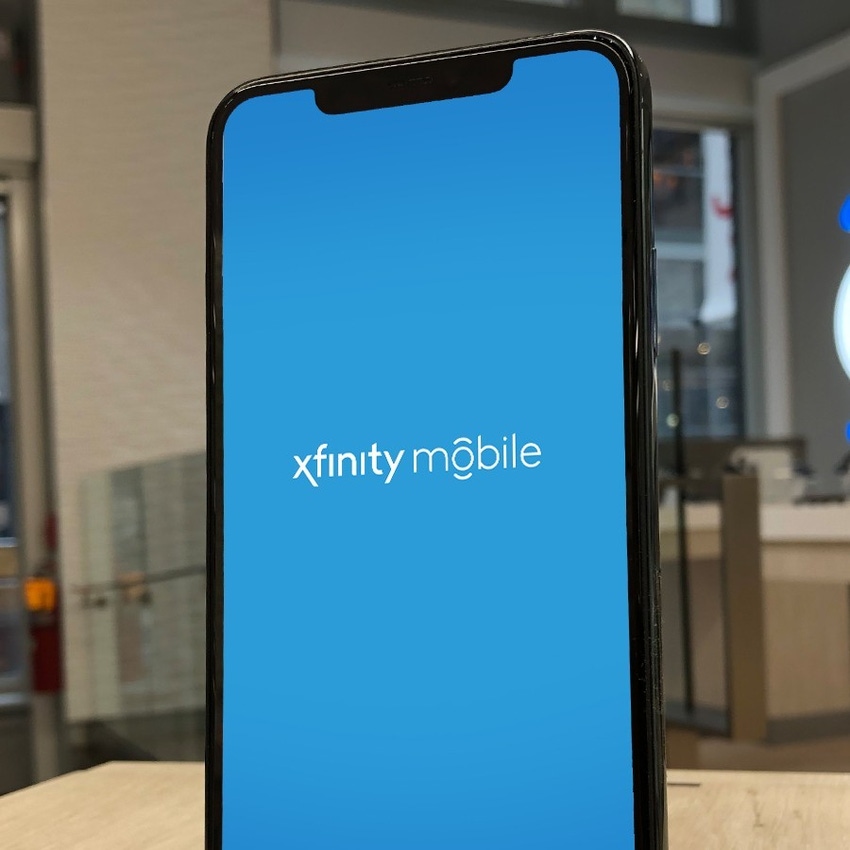Cable's wireless business more than 'just an MVNO' – analyst
Attention undoubtedly will focus on cable's broadband results in Q1, but cable's wireless business 'is a much better...than investors give it credit for being,' noted a MoffettNathanson analyst.

As US cable operators' first quarter results start to come out next week, there's no doubt that much of the emphasis will be on broadband subscriber results. Some operators will see those subscriber gains slow or even go negative in the face of new fiber and fixed wireless access (FWA) competition and sluggish housing move activity.
But while that piece of cable's business remains central and important, investors are not giving cable enough credit for activities in the wireless/mobile business, particularly when it comes to profitability, says Craig Moffett, analyst with MoffettNathanson (a unit of SVB Securities), in his Q1 2023 preview report (registration required).
Figure 1:  (Source: Comcast)
(Source: Comcast)
"It remains our suspicion that investors ascribe almost no value to cable's wireless business, so this is perhaps the last great debate for cable investors," Moffett says. "There is easily a 20-percentage-point spread between the most bullish and most bearish estimates for [wireless] segment profitability. Considering that wireless should, in just a few years, account for more than 10% of revenues, that delta translates into multi-point variances in overall Cable margins."
The "less picked-over" question for cable is its position in wireless and, more specifically, wireless profitability, Moffett adds. Estimates of those underlying margins go from as low as 5% up to 35% or more – with the consensus toward the lower end of that range.
Figuring that part out is a bit more challenging, according to Moffett, since Comcast doesn't report wireless margins separately and Charter Communications will stop reporting them starting this quarter. That's due in part to new convergence service bundles that tighten the ties between home broadband and mobile.
But Moffett's broader view is that cable's wireless business is not "just an MVNO" that's assumed to possess low margins.
Look to Verizon
While CBRS spectrum offloads aren't yet having much of an impact on cable's wireless margins, which remain depressed because of customer acquisition expenses during this phase of the business, Moffett believes Verizon's disclosures help to paint the picture.
He points out that Verizon reported big increases in "non-retail" service revenue in 2022. Moffett attributes this wholesale wireless revenue boost to Verizon's MVNO deals with Comcast and Charter rather than from Verizon's smaller MVNO contracts.
Figure 2:  Click here for a larger version of this image.
Click here for a larger version of this image.
That "simple methodology" implies cable gross service margins of about 50% in 2021 and 70% in 2022, Moffett explains.
"While we wouldn't suggest this calculation is a precise reflection of Cable's incremental margins – there are puts and takes here that we are undoubtedly missing – we are confident that it is at least directionally right," he writes. "Its implications are dramatic. Put simply, the Cable wireless business is a much better business than investors give it credit for being. And as the business grows, we believe it will provide a much larger boost to overall margins than most expect."
And while net margins for wireless are no doubt lower than margins for broadband, they are expected to rise as customer acquisition costs fall as a percentage of revenue, and particularly as the operators start to reap the benefit of CBRS small cell offloads that offset MVNO costs.
"Investors will inevitably focus first on broadband net additions," Moffett says. "But we would argue that margins, and particularly wireless margins, are the most material source of divergence in estimates, and are therefore the most important metric to watch."
Broadband expectations
The analyst's Q1 preview also includes some predictions on broadband. After Comcast warned of softness in that part of the market in late January, Moffett now expects Comcast to shed about 6,300 broadband subs in Q1, and for Altice USA to lose 17,300. Aided by its faster footprint expansion in rural markets, Charter is expected to gain about 94,100.
Moffett put his preview together amid Comcast's new segment reporting structure. As disclosed in mid-March, Comcast will report segment operating results around two primary businesses: Connectivity & Platforms and Content & Experiences.
Connectivity & Platforms will include its broadband and wireless connectivity businesses operated in the US and with Sky in Europe. Underneath that, the Residential Connectivity & Platforms segment will include residential broadband wireless connectivity services, business video services, advertising sales and the Sky channels. The Business Services Connectivity subsegment will include connectivity services for all sizes of business customers.
The Content & Experiences segment will include Comcast's media and entertainment businesses. That includes a Media subsegment primarily comprised of NBCUniversal's TV and streaming platforms and networks operated by NBC and Telemundo along with Sky Sports and other digital properties. Other subsegments include Studios (NBCU and Sky film and TV production and distribution operations) and Theme Parks.
Related posts:
— Jeff Baumgartner, Senior Editor, Light Reading
About the Author(s)
You May Also Like




_International_Software_Products.jpeg?width=300&auto=webp&quality=80&disable=upscale)







